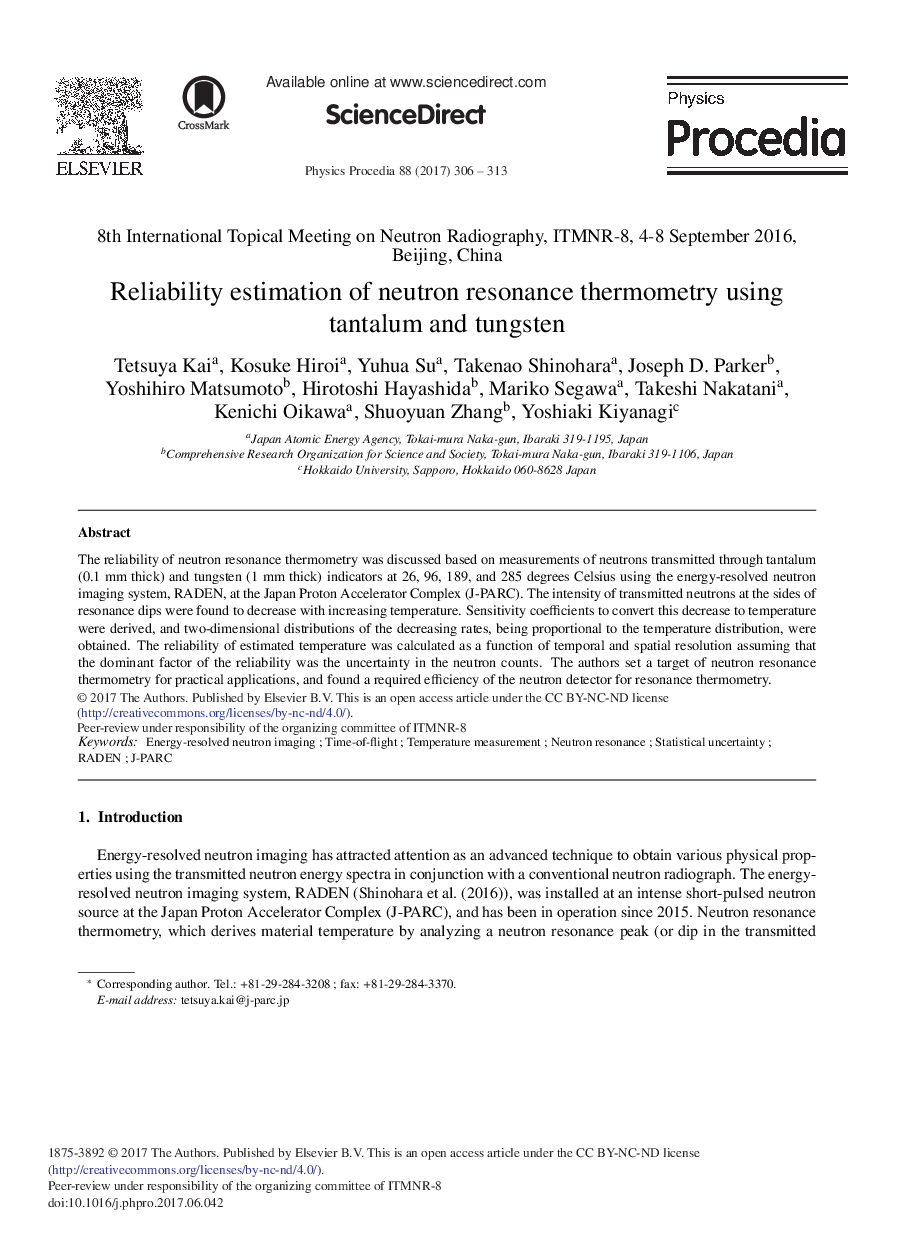| Article ID | Journal | Published Year | Pages | File Type |
|---|---|---|---|---|
| 5497222 | Physics Procedia | 2017 | 8 Pages |
Abstract
The reliability of neutron resonance thermometry was discussed based on measurements of neutrons transmitted through tantalum (0.1Â mm thick) and tungsten (1Â mm thick) indicators at 26, 96, 189, and 285 degrees Celsius using the energy-resolved neutron imaging system, RADEN, at the Japan Proton Accelerator Complex (J-PARC). The intensity of transmitted neutrons at the sides of resonance dips were found to decrease with increasing temperature. Sensitivity coefficients to convert this decrease to temperature were derived, and two-dimensional distributions of the decreasing rates, being proportional to the temperature distribution, were obtained. The reliability of estimated temperature was calculated as a function of temporal and spatial resolution assuming that the dominant factor of the reliability was the uncertainty in the neutron counts. The authors set a target of neutron resonance thermometry for practical applications, and found a required efficiency of the neutron detector for resonance thermometry.
Related Topics
Physical Sciences and Engineering
Physics and Astronomy
Physics and Astronomy (General)
Authors
Tetsuya Kai, Kosuke Hiroi, Yuhua Su, Takenao Shinohara, Joseph D. Parker, Yoshihiro Matsumoto, Hirotoshi Hayashida, Mariko Segawa, Takeshi Nakatani, Kenichi Oikawa, Shuoyuan Zhang, Yoshiaki Kiyanagi,
